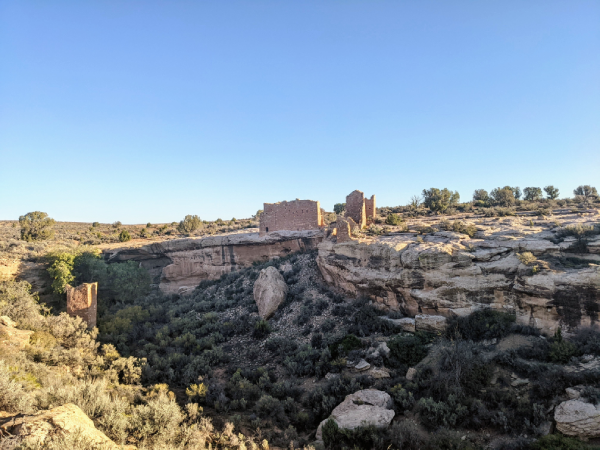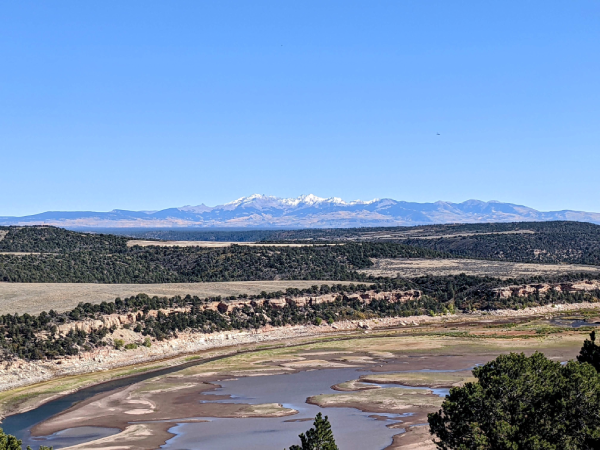After hanging out at the Goosenecks I drove north to Bluff. A small town with not much going on. The fort was heavily advertised along the road but it didn’t tickle my fancy. So I drove through and made my way into the Native American reservation.
A half-hour drive down the state highway from Bluff brings you into Montezuma Creek, a town that is in the Navajo Nation territory. I didn’t realize how large the Navajo Nation is. It’s the size of a small country really. At about 28,000 square miles it’s about as big as Scotland!
It’s been a fun little game this summer, finding the cheapest gas. I don’t drive myself crazy but anyone who knows me well knows that I hate overpaying for anything. I am always looking for a fair deal. I find it crazy how the price can vary so widely in a town or city.
The gas on the reservation was so much cheaper than in Bluff. The reservation isn’t subject to the same taxes and it shows. I’d imagine anyone that lives in town gets their fuel here as well. I was pleased.
There wasn’t any reason to stay in town and I moved north to Hovenweep National Moment. I hadn’t heard of it until I was browsing the map, looking for a place to camp for the night. There are so many small national monuments out here.
The main draw here is the Puebloan ruins. The buildings are roughly 800 years old and they are in incredible condition. The town was built along the rim of this small gulch. There are a few buildings down at the bottom of the gorge as well. A good way to warm myself up for Mesa Verde National Park.
The four corners region (where Utah, Colorado, New Mexico, and Arizona meet) is filled with ancient Puebloan archeological sites. Mesa Verde is the most well-known and the only national park in the area. But there is also Hovenweep National Monument and Canyons of the Ancients National Monument as well.
Canyon of the Ancients covers a huge area of land at around 175,000 acres. There are over 8,000 identified archeological sites that have been identified and more are being found all the time.
I woke up early in the morning the next day, did some yoga with the sunrise, and hiked the trail around the gorge and through the ruins. Had the entire place to myself and it was very peaceful. I tried to imagine how the communities lived 800 years ago.

There weren’t any of the famous cliff dwellings in this area but the buildings themselves were impressive. There were towers and long houses and there was also this building that seemed to be built into a hollowed-out boulder.

Once I finished up I crossed the border into Colorado and went to the Canyon of the Ancients visitors center. It really is more of a museum covering the ancient Puebloans and the history of archeological discovery in the area.
The museum was very thorough and I enjoyed learning about the customs and legends of the Native Americans that lived in the area. It was also cool to see how the ways that these people lived and formed their communities changed over time.
Originally they built their dwellings underground and they would enter and exit through a hole in the roof. Building in this way kept them cool and helped protect them from the harsh weather in the desert. Eventually, they graduated to above-ground dwellings. And after that, some of the people moved into cliff dwellings, like the ones you find in Mesa Verde.
The visitor’s center is located close to an archeological site. I climbed the hill to go check it out but there wasn’t much to it. Only the base of the buildings that once stood there remained. But the views from the top of the hill were fantastic.

To the south, you could see Sleeping Ute Mountain. The natives have a legend that explains the formation of the range. And to be fair it looks like a sleeping man. If you squint really hard. To the east, I could take in the San Juan mountains. Snow-capped already. It got me thinking about ski season.